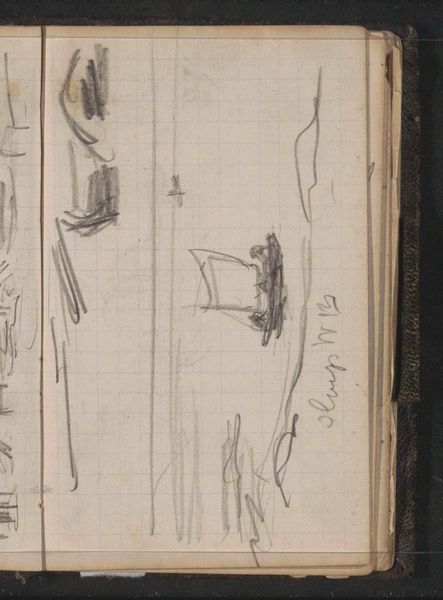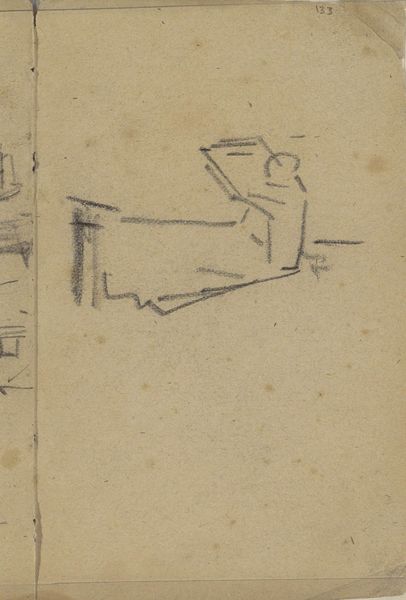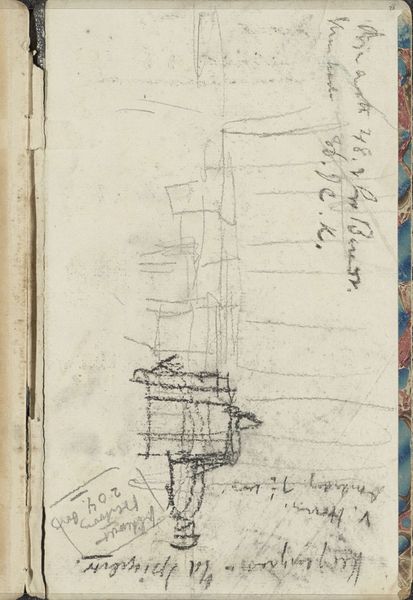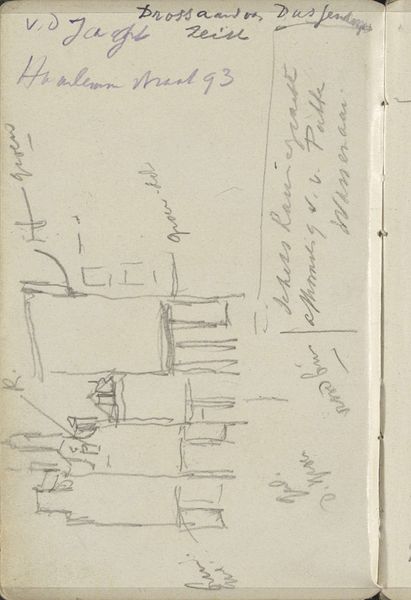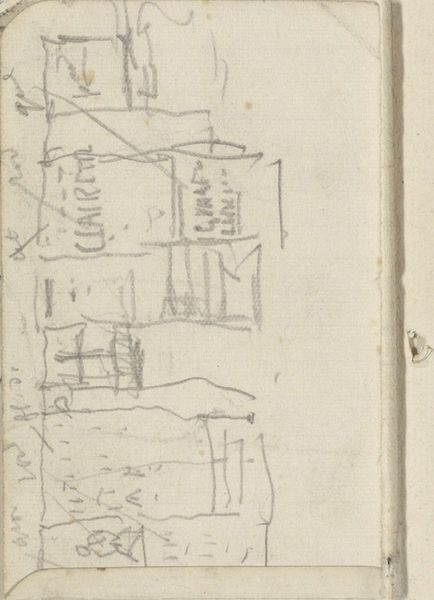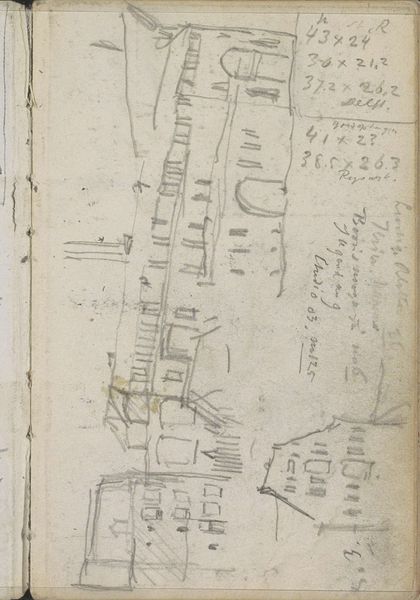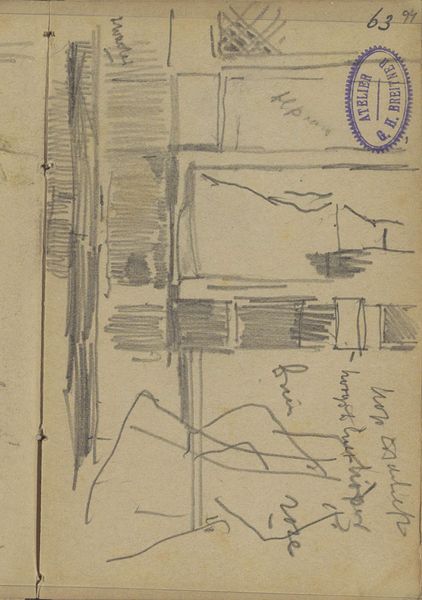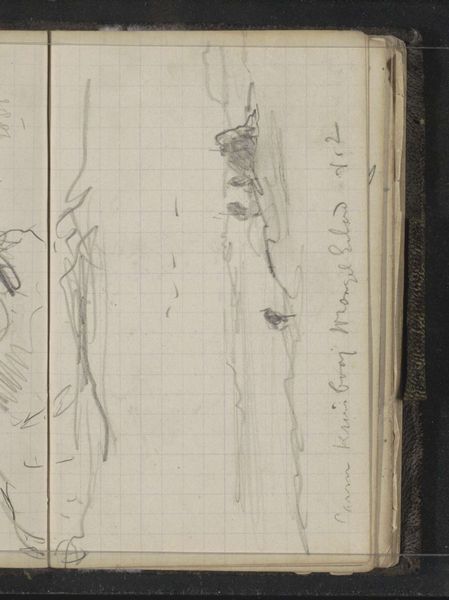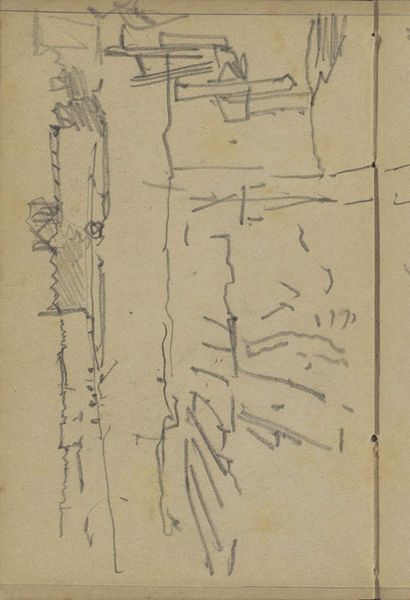
drawing, pencil
#
drawing
#
aged paper
#
toned paper
#
quirky sketch
#
impressionism
#
sketch book
#
hand drawn type
#
landscape
#
personal sketchbook
#
sketchwork
#
sketch
#
pencil
#
sketchbook drawing
#
storyboard and sketchbook work
#
northern-renaissance
#
sketchbook art
Copyright: Rijks Museum: Open Domain
Curator: Looking at this sketch, my immediate impression is a stark, lonely outpost against a vast, unseen cold. It has that feeling of being on the edge of the known world, scribbled almost secretively on a well-worn page. Editor: Indeed. We’re viewing "Russisch weerstation op Nova Zembla," a pencil drawing from around 1880 to 1887 by Louis Apol. You can currently find it housed right here at the Rijksmuseum. What interests me most is thinking about this image in the context of Dutch artistic engagement with polar exploration during this period. Curator: You can really sense that almost breathless urgency in the line work, the frantic dashes capturing a reality so different from, say, the cozy interiors of Amsterdam we often associate with the era. It’s fascinating how quickly he jotted this down – it's like catching a whispered secret of the arctic. Editor: Absolutely, and Apol never visited the arctic himself! These depictions were based on second-hand accounts, paintings, and sketches done by explorers, and were then consumed by a public hungry for adventure and knowledge. Curator: Which adds an interesting layer. It's not just the starkness of the Arctic he's conveying, but the excitement and exoticism it held for those back home. Like a postcard from another planet, filtered through someone else's memory. Editor: Precisely. Consider the impact these types of images had on shaping public imagination and, by extension, funding and policies surrounding polar research. Art wasn't merely reflecting reality; it was actively involved in constructing it. These sketches were meant for intimate viewing. They offer a quiet look into how Dutch society processed and commodified the unknown. Curator: And yet, within that constructed image, there’s still such a genuine sense of wonder. Despite never setting foot there, Apol captures the essence, the otherworldliness, with an honesty that transcends its second-hand nature. Perhaps the distance allowed him a clearer vision, free from the distractions of firsthand experience? Editor: Perhaps. What I take away from Apol's drawing is less about accurate depiction and more about understanding the mechanisms through which the Arctic became a shared cultural space. Curator: I think for me, the true marvel of this little sketchbook page is its ability to conjure that sense of longing, both for the artist capturing a distant reality and for us, centuries later, peering in and wanting to reach across the ice. Editor: It’s a quiet piece, offering big insights.
Comments
No comments
Be the first to comment and join the conversation on the ultimate creative platform.
